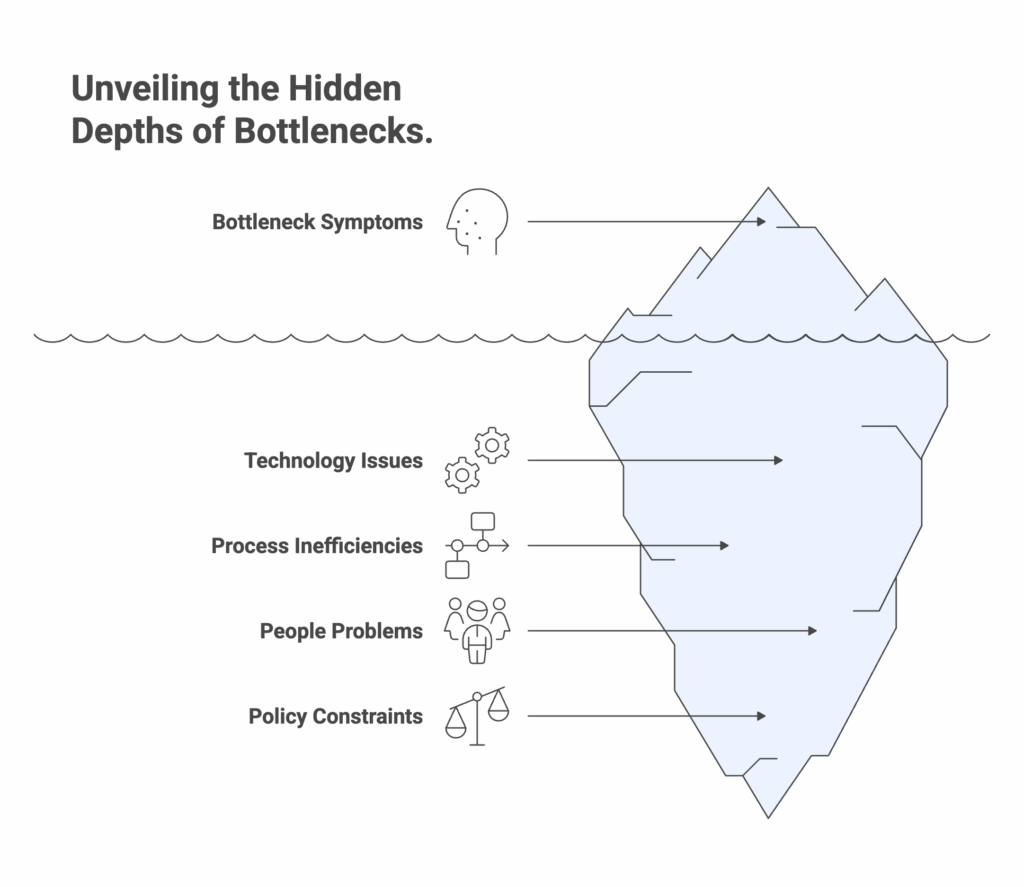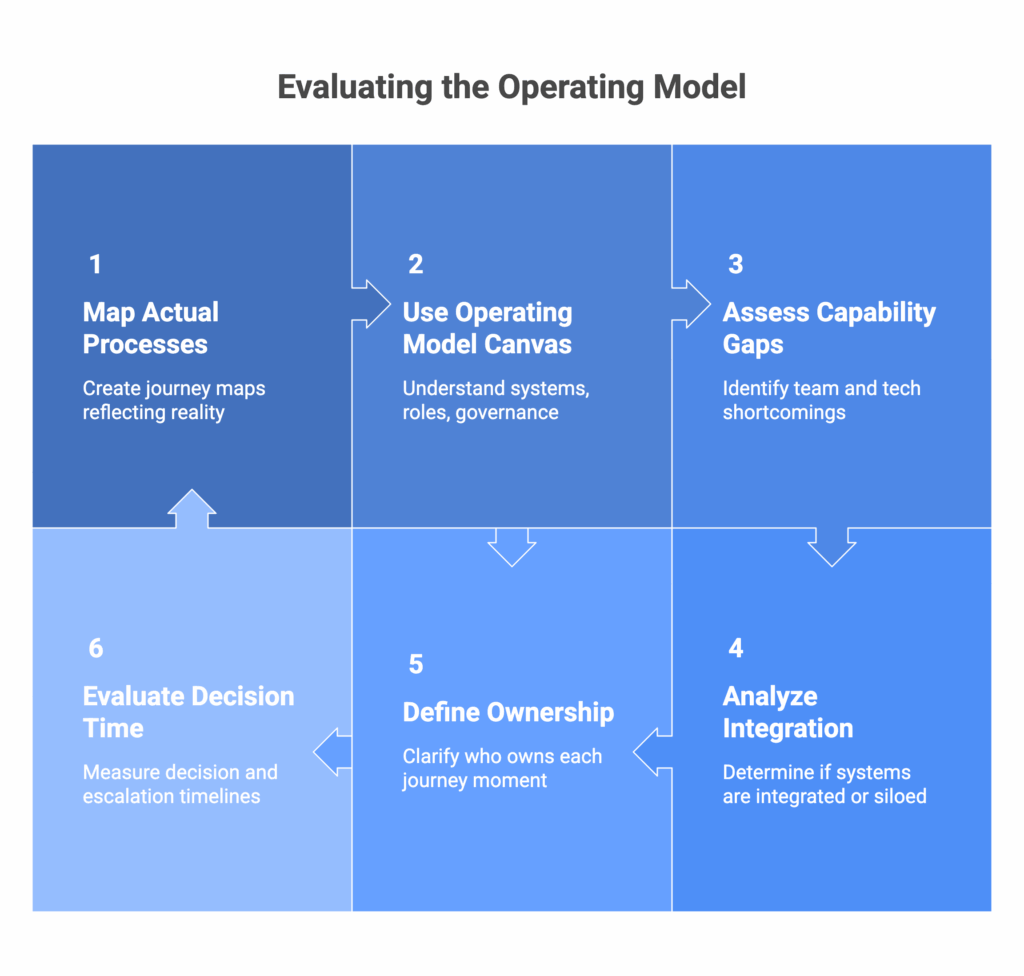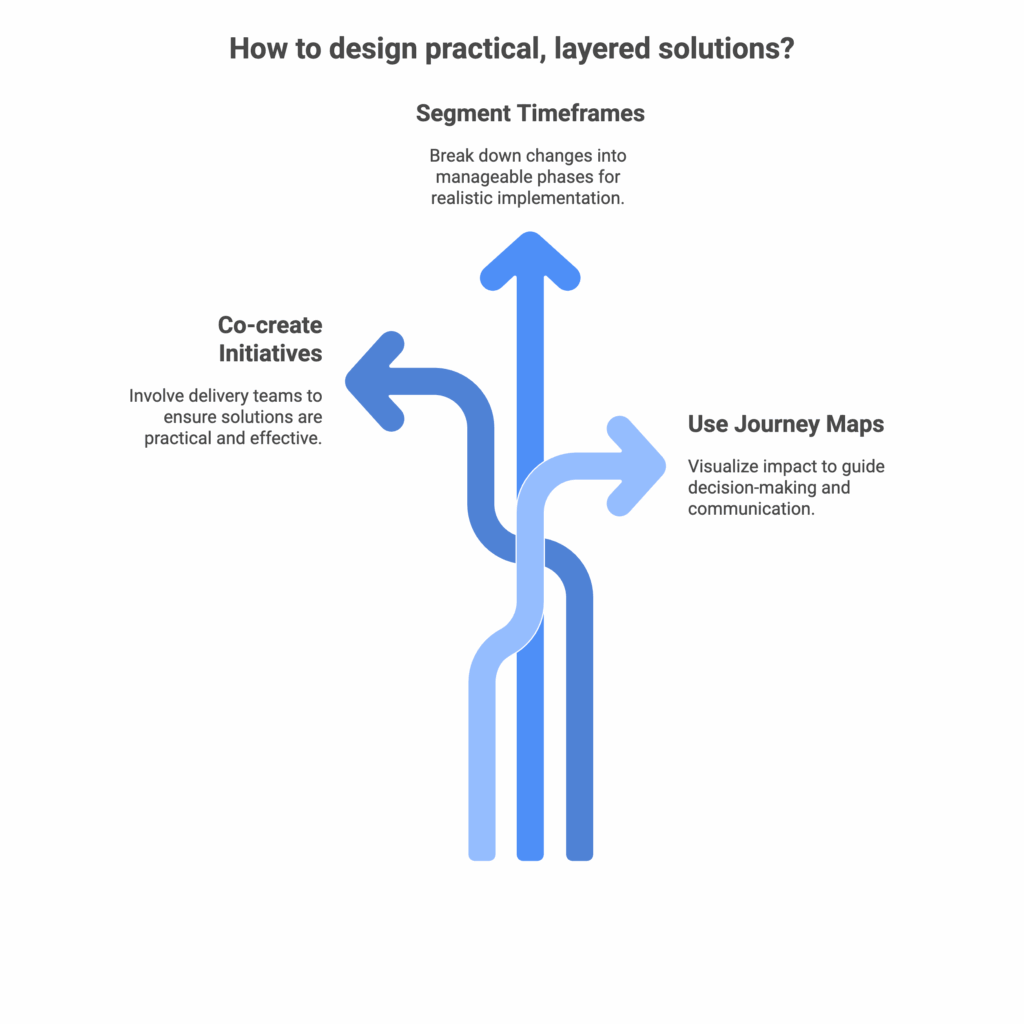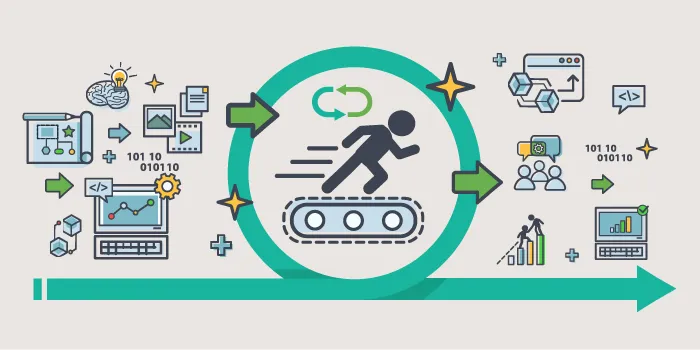Public systems are designed to serve—but often end up stalling layered processes and misaligned structures. Complex approvals, disconnected tech, manual processes, and unclear roles frustrate citizens and exhaust internal teams.
But meaningful transformation doesn’t require tearing everything down. With a structured approach rooted in service design thinking, government entities can shift from fragmented to fluid.

At StrategyConnect, we’ve seen this firsthand—our diverse teams have helped UAE-based entities design seamless services and drive real-world operational transformation across. We’ve successfully supported 80+ government services, re-engineered 350+ public sector processes across 50+ cross-functional teams, and enabled over 400 government staff through implementation-focused transformation efforts.
This blog brings together the practical steps and insights that have helped make those transformations possible.
Step 1: Capture What’s Broken from the Ground Up
What to do:
Start with a structured diagnosis of pain points. But don’t just analyze systems—listen to the people living the service daily: Frontline employees, Citizens (end-users), Cross-functional teams involved in delivery etc.
Key Activities:
- Host small group chats to understand real stories and not just surveys.
- Review complaint logs, chat transcripts, call center records
- Deploy mystery shopper exercises to experience real-world friction
Capture real experiences, not just metrics. Let the voices from the ground reshape the narrative.


Step 2: Conduct Root-Cause Analysis (Not Surface Fixes)
What to do:
Behind every bottleneck is a story waiting to be understood. Don’t settle for surface symptoms—dig deeper using structured curiosity. Use the “5 Whys” method to get beyond surface-level pain points.
Key Activities:
Ask “Why?” five times — but don’t just write answers in a list. Categorize each reason into one of the four core buckets:
- Technology: Are legacy systems slowing things down? Are platforms disconnected?
- Process: Are there too many approval steps? Is there manual data entry or duplication?
- People: Is staff unclear about roles? Lacking training? Overstretched?
- Policy: Mandates, legal constraints, outdated rules
This method doesn’t just surface individual issues—it shows where your system is consistently weak. If 70% of your “whys” fall under Process, you know simplification is your north star.

Step 3: Evaluate the Operating Model
What to do:
Now that you understand the pain, look at the machinery behind it. Map how things actually work, not how they were designed on paper.
Key Activities:
- Build end-to-end journey maps that reflect reality
- Use the Operating Model Canvas to understand systems, roles, governance
- Run a Capability Gap Assessment to highlight where teams or tech fall short
This helps with key questions like: Are systems integrated or siloed? Who owns each moment in the journey? How long do decisions or escalations take? The goal is to reveal the backstage processes driving the front-stage experience.


Step 4: Design Practical, Layered Solutions
What to do:
Design solutions that balance quick wins with long-term service redesign.
Key Activities:
- Co-create initiatives with delivery teams, not just management
- Segment changes into realistic timeframes (Immediate, Mid-Term, Long-Term)
- Use Before/After Journey Maps to show impact visually
Examples across:
- Process: Reduce approval steps from 4 to 2
- People: Reallocate staff to peak times based on demand data
- Tech: Integrate delivery tracking with CRM for live updates
Think of this as your starting point: test small, learn quickly, improve continuously, and scale what works. Let feedback guide the way.

✅ Step 5: Build a feedback loop post implementing Ownership and Accountability
What to do:
Change won’t stick without clear roles and visible progress. Establish strong governance, communication, and reporting loops.
Key Activities:
- Create a RACI Matrix to clarify who owns what
- Link every initiative to measurable KPIs—whether it’s time saved, complaints reduced, or satisfaction improved. This makes the value real.
- Schedule quarterly frontline feedback circles
- Re-run your service experience audit annually to check for system creep
In our transformation narrative, ownership is how the story becomes real. A transformed organization isn’t one that changes once. It’s one that keeps changing because it listens well.

The Bottom Line: Service delivery bottlenecks are Beatable
Transforming public sector operations doesn’t require radical reinvention—it requires structured empathy, strong storytelling, and relentless simplification.
By rooting the transformation in real journeys, cross-functional ownership, and co-authored solutions, institutions can evolve into organizations that feel responsive, human, and empowering.




